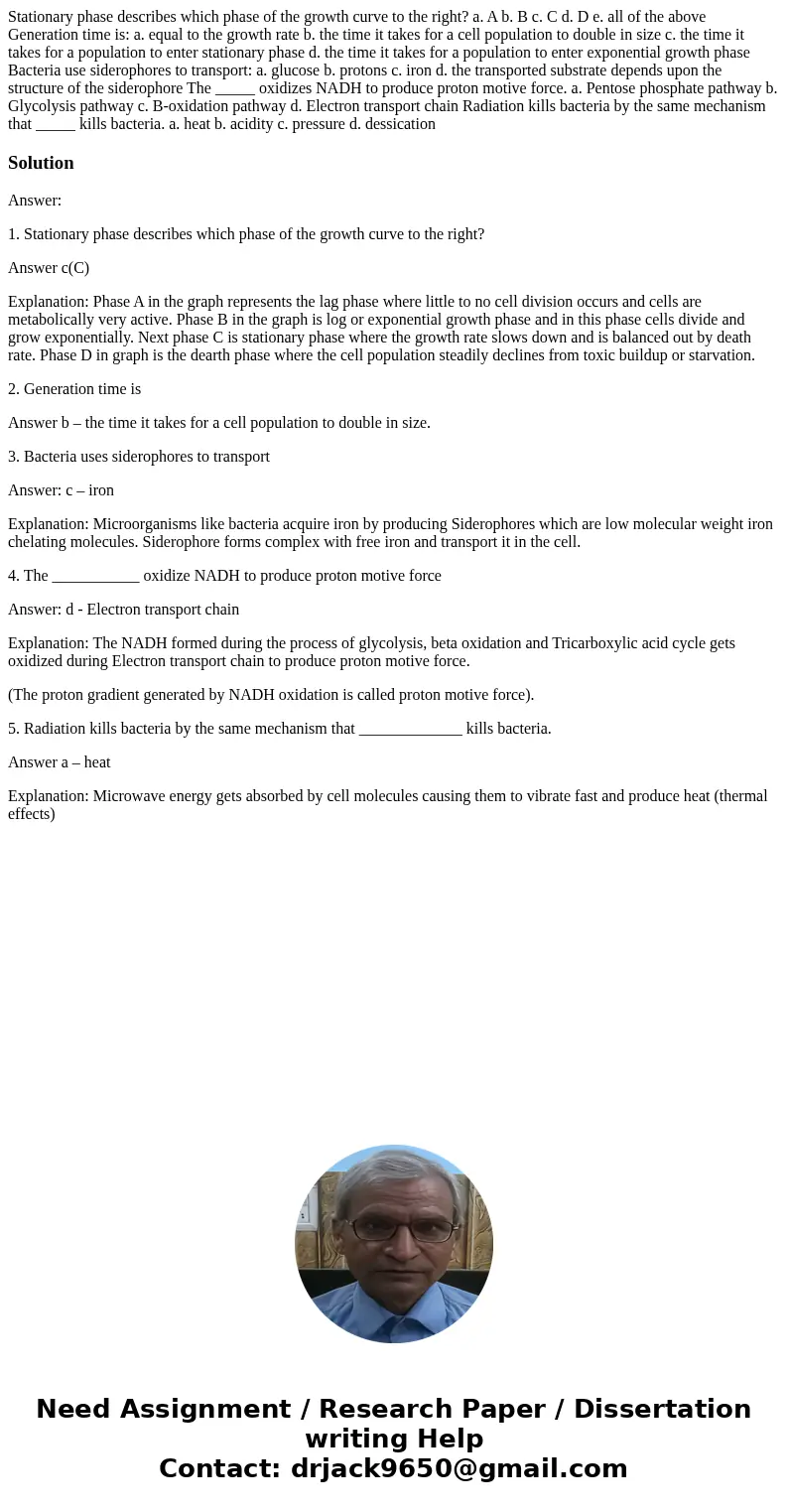Stationary phase describes which phase of the growth curve t
Solution
Answer:
1. Stationary phase describes which phase of the growth curve to the right?
Answer c(C)
Explanation: Phase A in the graph represents the lag phase where little to no cell division occurs and cells are metabolically very active. Phase B in the graph is log or exponential growth phase and in this phase cells divide and grow exponentially. Next phase C is stationary phase where the growth rate slows down and is balanced out by death rate. Phase D in graph is the dearth phase where the cell population steadily declines from toxic buildup or starvation.
2. Generation time is
Answer b – the time it takes for a cell population to double in size.
3. Bacteria uses siderophores to transport
Answer: c – iron
Explanation: Microorganisms like bacteria acquire iron by producing Siderophores which are low molecular weight iron chelating molecules. Siderophore forms complex with free iron and transport it in the cell.
4. The ___________ oxidize NADH to produce proton motive force
Answer: d - Electron transport chain
Explanation: The NADH formed during the process of glycolysis, beta oxidation and Tricarboxylic acid cycle gets oxidized during Electron transport chain to produce proton motive force.
(The proton gradient generated by NADH oxidation is called proton motive force).
5. Radiation kills bacteria by the same mechanism that _____________ kills bacteria.
Answer a – heat
Explanation: Microwave energy gets absorbed by cell molecules causing them to vibrate fast and produce heat (thermal effects)

 Homework Sourse
Homework Sourse